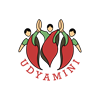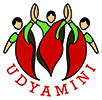Handloom – Almost 95% of the market for handlooms is occupied by the private sector.  Authentic handwoven sustainable textiles always enjoyed a market both at the national level and international levels. However, this potential is not harvested due to the small number of buying agencies reaching these producers and the inability of the weavers to consistently produce the required quality and quantity.
Authentic handwoven sustainable textiles always enjoyed a market both at the national level and international levels. However, this potential is not harvested due to the small number of buying agencies reaching these producers and the inability of the weavers to consistently produce the required quality and quantity.

 Animal Husbandry– Assam produces an estimated 46,870 tons of meat against the estimated demand of 363,000 tons annually from within the state (Source – Integrated Sample survey report 2016-17) recording an estimated deficit of 88%. When it comes to eggs, the state produces only 475m as against an annual demand of 5,600m. These gaps reflect high dependency on transported meat and eggs from outside the state and the potential for the growth of the small livestock value chain.
Animal Husbandry– Assam produces an estimated 46,870 tons of meat against the estimated demand of 363,000 tons annually from within the state (Source – Integrated Sample survey report 2016-17) recording an estimated deficit of 88%. When it comes to eggs, the state produces only 475m as against an annual demand of 5,600m. These gaps reflect high dependency on transported meat and eggs from outside the state and the potential for the growth of the small livestock value chain.
Millet Production– the demand for millets was experiencing a decline due to excess focus on rice and wheat and also because millets are viewed as “cereal of the poor people”. In 2018, Food and Agriculture Organisation (FAO) Council approved India’s proposal to observe an International Year of Millets in 2023. The high protein and mineral content of these grains makes them ideal for the vegetarian and vegan population, largely based in the United States, Europe, and Asia-Pacific. Hence, the demand for millet-based products is growing rapidly in these regions. The Indian government is strongly campaigning for including millets in the daily food intake.
on rice and wheat and also because millets are viewed as “cereal of the poor people”. In 2018, Food and Agriculture Organisation (FAO) Council approved India’s proposal to observe an International Year of Millets in 2023. The high protein and mineral content of these grains makes them ideal for the vegetarian and vegan population, largely based in the United States, Europe, and Asia-Pacific. Hence, the demand for millet-based products is growing rapidly in these regions. The Indian government is strongly campaigning for including millets in the daily food intake.

